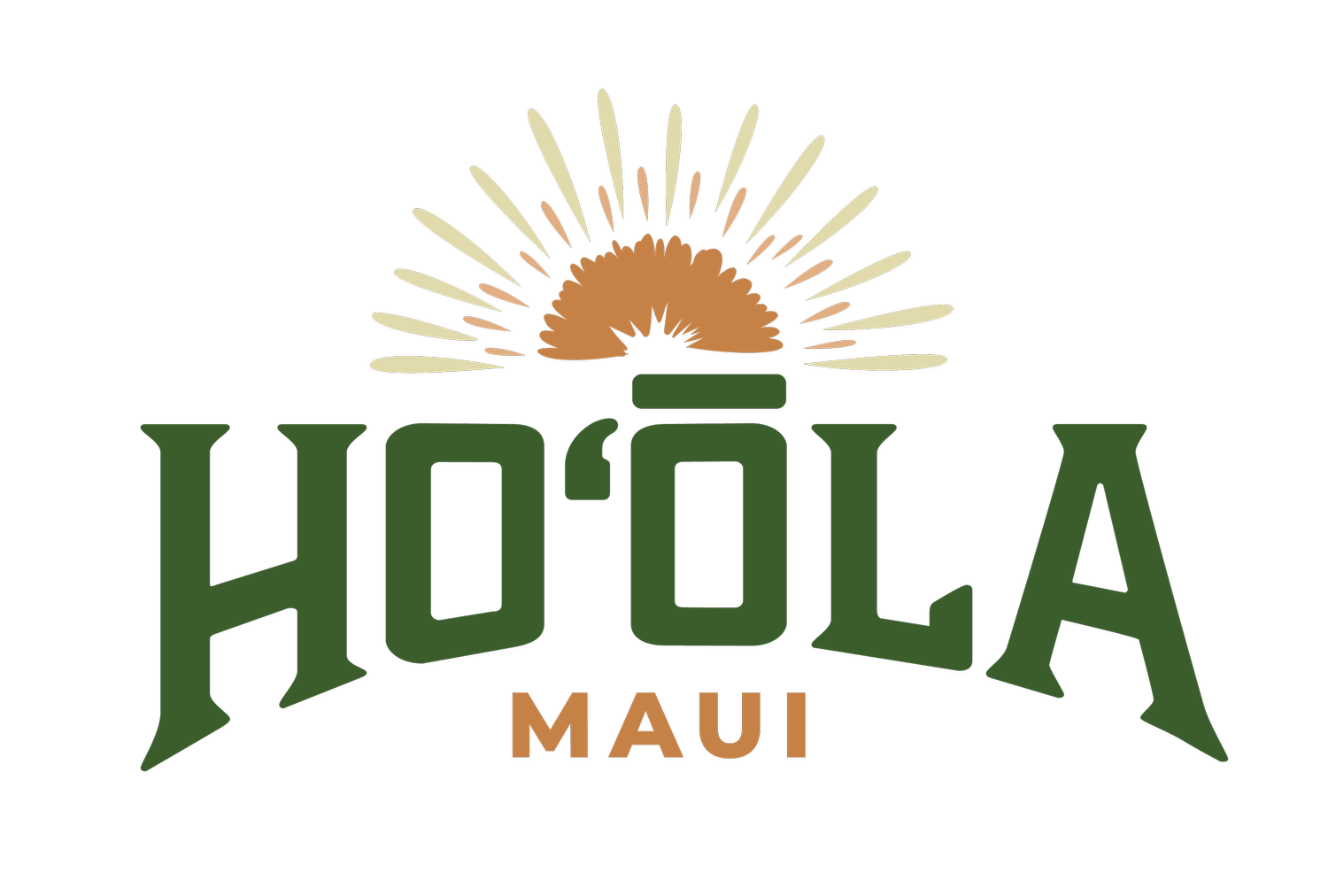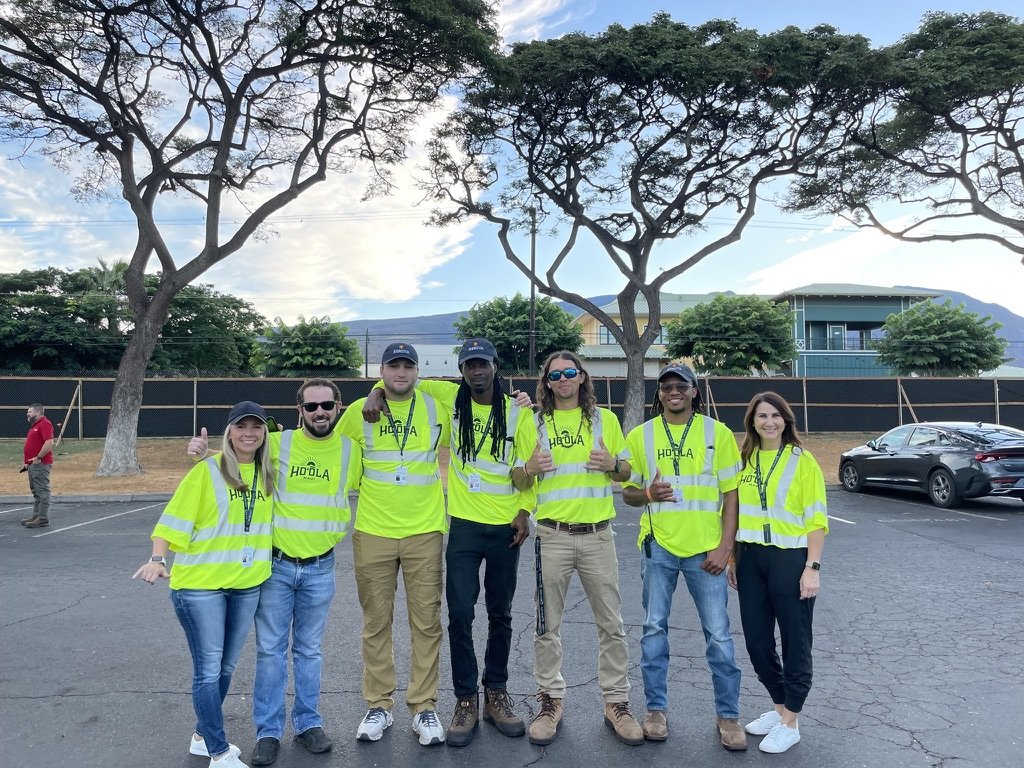Completing the Phase 1 Hazardous Site Assessment work in West Maui
DAWSON and fellow Hoʻōla Maui members and partners have worked diligently for the last three months to complete the Hazard Site Assessment (HSA) phase of work in support of the U.S. Army Corp of Engineers (USACE) ongoing cleanup and recovery efforts in Lahaina. While the long days working in the burn zone have been challenging, they have strengthened the bonds among crews and members of the community who have suffered incomparable loss.
As the completion of the HSA phase of work gives way to Phas 2 debris removal led by USACE, we’re taking stock of the magnitude and impact of DAWSON and fellow Hoʻōla Maui members’ work in Lahaina, Kula and Olinda.
1,481 Tax Map Keys (TMKs) Fully Assessed
Working under DAWSON, the prime contractor leading the HSA scope of work under USACE, Hoʻōla Maui crews assessed affected properties in West Maui.
Each Hazard Site Assessment included documentation of descriptions and the exact locations of:
Structural ash footprint: The area where ash is present from burnt buildings, plus an additional 3-foot perimeter around the ash
Hardscapes: Slabs, foundational structures, walkways, patios, standing walls, retaining walls, and driveways
Household hazardous materials (HHM): Chemical or physical hazards including paint, pool chemicals, fuel, etc., that were not immediately removed by EPA
Vehicles: Cars, boats, motorcycles, or any other titled vehicles
Trees: Trees within the structural ash footprint
Utilities: Location of underground and/or above ground utilities
Potential explosives: Unexploded ordnance (UXO), firearms, ammunition
Other features: Any other features that require special attention including pools, septic tanks, cesspools, or other sensitive items on the property
Of 1,649 total TMKs affected by the West Maui wildfires, 1,481 TMKs were assessed and 168 TMKs were not assessed, either because they were deferred to Phase 2 or they had opted out of the program.
6,371 Samples Taken
As part of the HSA process, Hoʻōla Maui crews inspected the properties for household hazardous materials and contaminants like asbestos, with the purpose of identifying and removing materials that may pose a health risk during the Phase 2 debris removal process.
6,241 Trees Assessed
Arborists have played a critical role in completing Hazard Site Assessments in Phase 1 of the debris removal process. Lahaina-based Kane’s Legacy Tree Service and Haiku-based Climbing HI worked under DAWSON, the prime contractor, to carefully examine each tree to determine whether it might pose a potential hazard in the future.
4,678 Trees Tagged
Of the 6,241 trees assessed by the arborists, 4,678 were tagged with color-coded symbols to indicate the tree’s status to Phase 2 debris removal crews. For example, trees marked with a blue dot mean that the tree is unlikely to survive the next four to five years and should be removed to prevent it from falling and potentially harming people or property. A blue or yellow flag indicates that cultural monitors have identified a tree as culturally significant.
202 Trees Marked as Protected
During the hazardous tree assessment process, arborists and cultural monitors worked collaboratively to identify trees that are culturally significant or important and that will remain protected on the properties. This significance could be due to the species of the tree, the history of the tree itself, or if the tree serves as a marker of cultural importance for the ground beneath or near it.
3,430 Vehicles Located
As crews inspected each property, they located more than 3,000 cars, boats, motorcycles, and other titled vehicles.
168 Tons of Household Hazardous Materials (HHM) and Bulk Asbestos Material (BAM) Removed
Working property by property, crews removed tons of HHM and BAM to ensure Phase 2 of the debris removal process is safe and efficient.
These numbers showcase the overwhelming amount of personal sacrifice and dedication among the DAWSON team, subcontractors, and members and partners of the Hoʻōla Maui hui to accomplish the mission. Mahalo nui to everyone who contributed in ways big and small to the successful execution of this contract. This collective effort has effectively paved the way for the next important phase of the cleanup.
We encourage community members to stay informed about the latest debris removal progress in Lahaina, as well as resources available to the community as they continue to navigate life after the wildfires:
Visit Maui County’s official Maui Recovers website
Access mental health resources for survivors
Visit the US Army Corp of Engineers’ (USACE) Hawaiʻi Wildfires website
Access a resource directory from Maui Nui Strong organized by needs and situations






